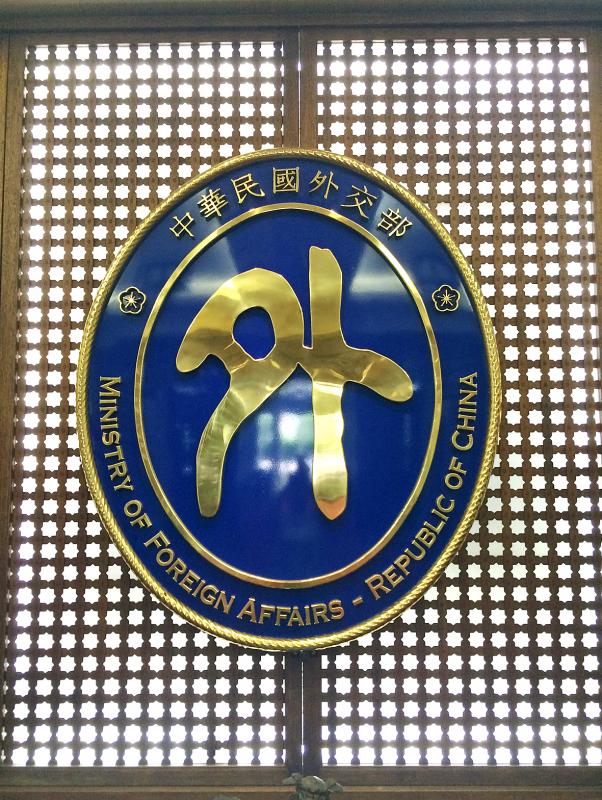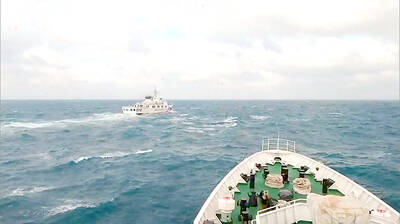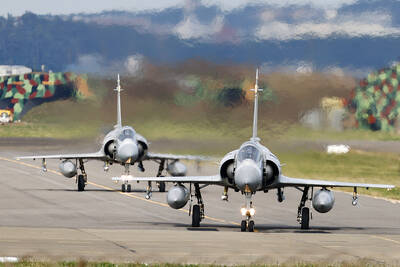Taiwan would strive to join the Comprehensive and Progressive Agreement for Trans-Pacific Partnership (CPTPP), as it would be challenging for the nation to join the Regional Comprehensive Economic Partnership (RCEP) given China’s dominance in the latter, the Ministry of Foreign Affairs said yesterday.
The RCEP was signed by 15 Asia-Pacific nations on the last day of the virtual ASEAN summit yesterday, becoming the world’s largest free-trade agreement.
The 15 nations are the 10 ASEAN members — Brunei, Cambodia, Indonesia, Laos, Malaysia, Myanmar, the Philippines, Singapore, Thailand and Vietnam — and Australia, China, Japan, New Zealand and South Korea.

Photo: Lu Yi-hsuen, Taipei Times
Taiwan would find it substantially difficult to join the RCEP, as it is led by China, the ministry said, adding that, as such, Taiwan’s main goal regarding regional economic integration is to push for participation in the CPTPP.
Taiwan would strive to initiate informal consultations, in preparation for joining the CPTPP, the ministry said, adding that it would continue to seek economic and trade cooperation opportunities with New Southbound Policy partner nations, the US, Japan and other like-minded nations.
Taiwan would make good use of the “US-Taiwan Framework to Strengthen Infrastructure Finance and Market Building Cooperation,” the ministry said, adding that the government would also support adding value to products and industrial transformation.
Separately yesterday, the Chinese Nationalist Party (KMT) accused the Democratic Progressive Party (DPP) government of not proactively trying to join the RCEP over the past four years, and declaring failure without even trying.
The trade volume between Taiwan and RCEP members accounts for about 59 percent of the nation’s total trade volume, and Taiwan’s investment in those nations accounts for 65 percent of its total foreign investment, so if Taipei cannot join the trade pact, the nation would suffer, the KMT said.
The DPP, trying only to please the US in the hopes of furthering economic and trade cooperation with Washington, neglected the development of the RCEP and the CPTPP, the KMT said, adding that the DPP’s failure in this regard could result in Taiwan being marginalized economically.
The party urged President Tsai Ing-wen (蔡英文) to call a high-level, cross-ministerial meeting to discuss how the RCEP would affect Taiwan and draw up solutions, saying that a report should be presented to the Legislative Yuan so that the public is not kept in the dark.

Taiwan is gearing up to celebrate the New Year at events across the country, headlined by the annual countdown and Taipei 101 fireworks display at midnight. Many of the events are to be livesteamed online. See below for lineups and links: Taipei Taipei’s New Year’s Party 2026 is to begin at 7pm and run until 1am, with the theme “Sailing to the Future.” South Korean girl group KARA is headlining the concert at Taipei City Hall Plaza, with additional performances by Amber An (安心亞), Nick Chou (周湯豪), hip-hop trio Nine One One (玖壹壹), Bii (畢書盡), girl group Genblue (幻藍小熊) and more. The festivities are to

Auckland rang in 2026 with a downtown fireworks display launched from New Zealand’s tallest structure, Sky Tower, making it the first major city to greet the new year at a celebration dampened by rain, while crowds in Taipei braved the elements to watch Taipei 101’s display. South Pacific countries are the first to bid farewell to 2025. Clocks struck midnight in Auckland, with a population of 1.7 million, 18 hours before the famous ball was to drop in New York’s Times Square. The five-minute display involved 3,500 fireworks launched from the 240m Sky Tower. Smaller community events were canceled across New Zealand’s

‘SLICING METHOD’: In the event of a blockade, the China Coast Guard would intercept Taiwanese ships while its navy would seek to deter foreign intervention China’s military drills around Taiwan this week signaled potential strategies to cut the nation off from energy supplies and foreign military assistance, a US think tank report said. The Chinese People’s Liberation Army (PLA) conducted what it called “Justice Mission 2025” exercises from Monday to Tuesday in five maritime zones and airspace around Taiwan, calling them a warning to “Taiwanese independence” forces. In a report released on Wednesday, the Institute for the Study of War said the exercises effectively simulated blocking shipping routes to major port cities, including Kaohsiung, Keelung and Hualien. Taiwan would be highly vulnerable under such a blockade, because it

UNDER WAY: The contract for advanced sensor systems would be fulfilled in Florida, and is expected to be completed by June 2031, the Pentagon said Lockheed Martin has been given a contract involving foreign military sales to Taiwan to meet what Washington calls “an urgent operational need” of Taiwan’s air force, the Pentagon said on Wednesday. The contract has a ceiling value of US$328.5 million, with US$157.3 million in foreign military sales funds obligated at the time of award, the Pentagon said in a statement. “This contract provides for the procurement and delivery of 55 Infrared Search and Track Legion Enhanced Sensor Pods, processors, pod containers and processor containers required to meet the urgent operational need of the Taiwan air force,” it said. The contract’s work would be